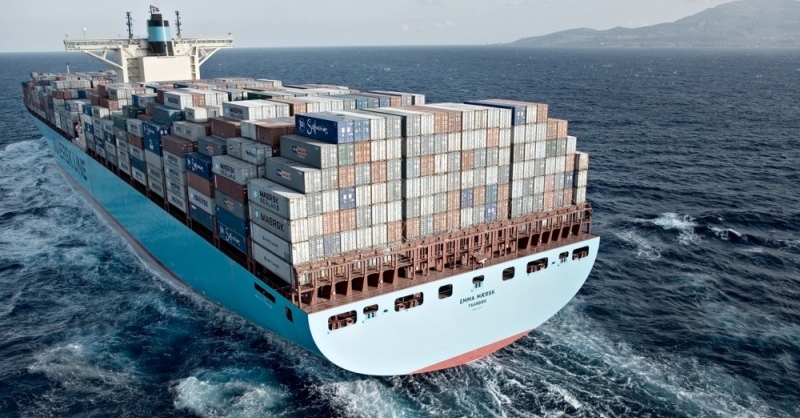Container volumes at Indian ports records 10 percent growth in Q2 FY18
December 7, 2017: India’s global containerized import-export recorded its highest growth in the past year, at a strong 10 percent in Q3 of 2017. As per a report by Maersk, this comes when India’s GDP is taking an upward turn once again, indicating that the impact of major reforms such as demonetization and GST are finally stabilizing, and the business environment is expected to improve further once concerns around GST refunds are addressed.

December 7, 2017: India’s global containerized import-export recorded its highest growth in the past year, at a strong 10 percent in Q3 of 2017. As per a report by Maersk, this comes when India’s GDP is taking an upward turn once again, indicating that the impact of major reforms such as demonetization and GST are finally stabilizing, and the business environment is expected to improve further once concerns around GST refunds are addressed.
These upticks are in turn expected to once more push up consumer spending, further propelling India’s trade prospects in the months to come; more so against the backdrop of recent announcements by the government on awarding the infrastructure status to India’s logistics Industry and setting up a special cell to promote India’s exports to the world.
Steve Felder, managing director, Maersk Line – India, Sri Lanka, Bangladesh, Nepal, Bhutan and Maldives, said “As local businesses supported by bold government reforms continue to benefit from the improving atmosphere, we expect India’s growth to only further boost its position in global trade and competitiveness. To that end, we in Maersk Line are fully equipped to support the trajectory of India’s trade, with end-to-end services to offer customers value at every step in the logistics value chain, right from financing cargo to secure store-door delivery in almost any corner of the world. We are committed to continuing to invest in further enhancing our capabilities in this area.”
The Maersk report took a close look at data related to India’s import-export trade with close to 200 countries across the globe reveals some interesting insights. In Q3 2017, exports to Mediterranean led India’s overall exports growth, registering a 14 percent increase; whereas exports to North America grew at 8 percent; indicating India’s strengthening trade ties with these regions.
Amongst the Mediterranean countries, Turkey emerged as India’s largest export trading partner in terms of overall volumes, due to growing demand for textiles from the northern states of India, as well as vehicles and metal from the western region of the country.
Exports to Algeria, on the other hand, showed the highest jump at 28 percent in Q3 2017, up from 12 percent growth in the corresponding period of last year.
Additionally, appliances and kitchenware exports to UAE gained significant steam, going from a negative growth of -44 percent in the corresponding period of last year to a 38 percent growth in Q3 2017. Demand for India-made appliances and kitchenware also saw a significant growth from Saudi Arabia, moving from -20 percent to 8 percent in Q3 2017.
Offering greater insight into India’s trade with the Mediterranean, Felder commented, “The growth in exports to Mediterranean countries has mainly come for East-Mediterranean. And this is owing to the political stability that is finally settling in Turkey, where we saw a lot of disruptions in the first half of this year.”
India’s imports advancement is mainly a result of western India showing a significant jump of 8 percent, as opposed to the negative import growth registered by the region in the corresponding period last year.
Additionally, north India and south India recorded 13 percent and 11 percent growth respectively, with their combined volumes substantially impacting overall growth. These surges have been on the back of increased demand for a range of commodities like electronics and electronic appliances from China, waste paper from United States, plastic and rubber from Saudi Arabia and auto parts and vehicles from Germany
Imports to east India, on the other hand, have shrunk by 3 percent from last years’ 10 percent growth, with China emerging as east India’s main trading partner, as the import of China-made products into the region grew by 35 percent. Imports of China-made products to western India has also grown significantly by 19 percent, led by electronic appliances, furniture, metals and paper.



